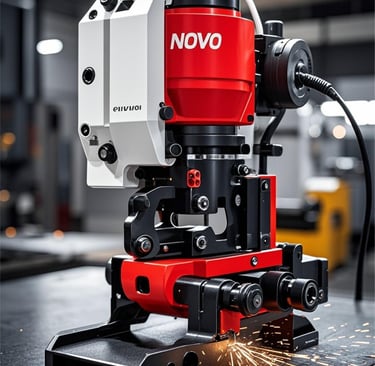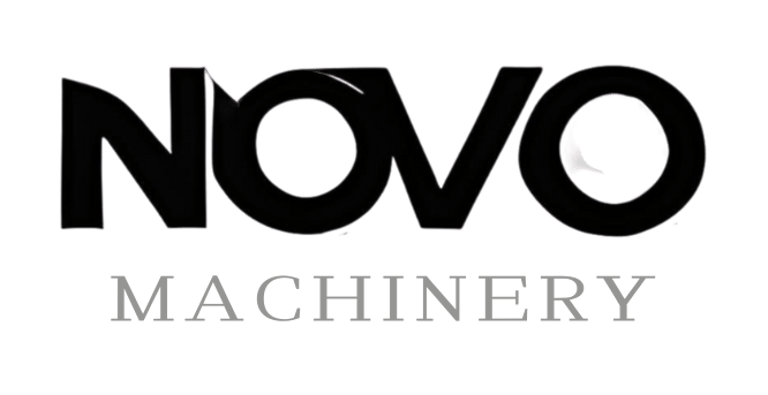Core Features of Busbar Processing Machines shearing machines bending machines and punching machines
Discover the three essential features of busbar processing machines. Learn why the integrated design of shearing, punching, and bending machines is crucial for the industry's efficiency and productivity.
7/26/20254 min read


Understanding Busbar Processing Machines
Busbar processing machines play a crucial role in the electrical engineering and manufacturing sectors, primarily due to their function in handling busbars. Busbars are conductive metal bars used to distribute electricity in electrical systems. They serve as critical components in both power distribution and management, facilitating the efficient transfer of electrical energy. As such, the importance of efficient busbar processing cannot be overstated; it significantly impacts the reliability and performance of electrical systems.
The integration of shearing, punching, and bending in busbar processing machines provides an effective solution for adapting busbars to specified dimensions and shapes, ensuring they meet the precise requirements of different applications. Shearing is the initial process where busbars are cut to the desired lengths, which allows for the fabrication of components that fit specific electrical configurations. Following this, the punching process creates holes or other features within the busbars, facilitating their installation and connection within electrical systems.
Moreover, bending is the third integral function of these machines, enabling the formation of busbars into various angles and configurations. This adaptability is essential in the design and assembly of electrical installations, as it allows for efficient space utilization and optimizing geometry to enhance electrical performance.
Together, these three core features streamline the fabrication process of busbars, decreasing production times and improving overall efficiency. By integrating shearing, punching, and bending in a single machine, manufacturers are equipped to enhance operational productivity while maintaining the quality and integrity of the busbars. The need for specialized equipment like these machines becomes increasingly relevant as the demand for reliable and efficient electrical systems continues to grow in various industries.
The Shearing Process: Precision and Efficiency
In the realm of busbar fabrication, the shearing process stands out as a critical feature that significantly enhances both precision and efficiency. Busbar processing machines are equipped with advanced shearing technology designed to provide clean, accurate cuts, which are essential for producing high-quality busbars that meet industry standards. This process utilizes a powerful shear blade mechanism that applies substantial force to cut through the material, allowing for clean edges and consistent lengths.
The technological mechanisms behind the shearing process involve hydraulic systems and CNC (Computer Numerical Control) programming. These systems ensure that the shearing operation is not only accurate but also highly repeatable, minimizing the risk of errors that can lead to material waste. This level of precision is vital for industries where exact dimensions are not just preferred but required, such as in the manufacture of electrical distribution systems, automotive components, and renewable energy structures.
Furthermore, the integration of shearing within busbar processing machines contributes significantly to reducing waste. Traditional methods often lead to excess scrap, as inaccuracies in cutting result in unusable fragments. However, with the precision offered by integrated shearing features, manufacturers can achieve tighter tolerances and utilize nearly all of the raw material. This reduction in waste translates into cost savings, thus enhancing productivity margins for businesses in various applications such as power generation, shipbuilding, and industrial manufacturing.
As industries increasingly seek to optimize their production processes and minimize costs, the importance of advanced shearing capabilities within busbar processing machines cannot be overstated. The combination of precision cutting and waste reduction ensures that manufacturers can respond effectively to the growing demand for customizable busbar solutions, making this innovation crucial for the future of busbar fabrication.
Punching: The Key to Versatile Design
Punching is a fundamental feature of integrated busbar processing machines, playing a crucial role in the production of busbars that meet the demanding requirements of modern electrical systems. This process facilitates the creation of various holes and shapes necessary for establishing reliable electrical connections within busbars. The precision and adaptability of punching operations are essential, as they allow manufacturers to tailor busbars to specific applications, ensuring compatibility with different electrical components.
The integrated design of busbar processing machines enables simultaneous punching operations, which presents a multitude of advantages. One of the primary benefits is time efficiency; by streamlining the punching process, manufacturers can significantly reduce the time spent on production. This efficiency is particularly beneficial in settings where high volumes of busbars are required, contributing to increased output and overall productivity. Furthermore, the simultaneous nature of these operations minimizes the need for additional equipment, reducing overhead costs associated with production.
Moreover, the versatility of punching capabilities in integrated busbar processing machines cannot be overstated. Manufacturers can create a wide range of hole sizes and configurations to accommodate differing specifications. This flexibility ensures that busbars can be designed for various applications, from residential electrical systems to large industrial setups. As a result, companies can quickly adapt their production lines to meet changing market demands, allowing them to stay competitive in an ever-evolving landscape.
In addition to time and versatility, the integrated punching feature also contributes to overall cost-effectiveness in production. By combining multiple operations into a single machine, manufacturers can reduce labor costs and minimize the need for extensive tooling changes, leading to considerable savings. Thus, the punching capability of integrated busbar processing machines is not just a functional aspect; it is a strategic advantage that empowers manufacturers to enhance their operational efficiency and profitability.
Bending: Crafting Complex Shapes with Ease
Bending is a critical function in the production of busbars, enabling the creation of complex shapes tailored to specific design requirements. This process allows manufacturers to transform flat metal strips into bespoke configurations that enhance the performance and efficiency of electrical systems. The precise bending capabilities of modern busbar processing machines are instrumental in ensuring the accuracy and quality of the final product.
One of the primary challenges encountered in bending operations is maintaining consistencies in angles and dimensions, which is essential for optimal functionality. Variations in the bending process can lead to defects that impact the reliability of the busbars and, ultimately, the systems they serve. Traditional bending methods often rely on manual adjustments and can be prone to human error. However, state-of-the-art busbar processing machines utilize advanced automation technologies, allowing for greater precision and repeatability in the bending process. With the integration of computerized controls, operators can easily input specifications and achieve consistent results across multiple production runs.
Moreover, when bending is integrated with shearing and punching operations, the workflow becomes significantly more efficient. This integrated design minimizes the need for multiple setups and reduces handling time between operations. As a result, manufacturers can streamline their processes, reducing labor costs and lead times while maintaining a high level of quality. In addition, modern machines are designed to handle a variety of materials and thicknesses, further expanding their utility in the industry.
The significance of bending in busbar manufacturing cannot be overstated, as it not only fulfills aesthetic and functional requirements but also ensures that the end products meet stringent safety standards. By addressing common challenges through innovative designs and integrating bending with shearing and punching, contemporary busbar processing machines are equipped to meet the demands of today's fast-paced manufacturing environments.
Innovate
Leading manufacturer of busbar processing equipment solutions.
Contact
Support
+131 2713 4627
© 2025. All rights reserved.
